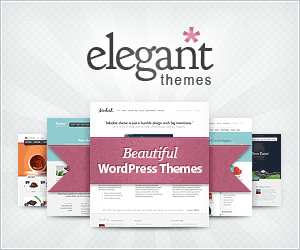Beginner Guide Small Business Ads: Top 3 Powerful Tips
Beginner guide small business ads can transform your small business from an unknown entity to a local favorite. If you’re looking to expand your reach and achieve sustainable growth, understanding advertising basics is key. Here’s a quick glance at how you can begin:
- Define Clear Goals: Plan what you want your ads to achieve, like attracting a specific number of new customers or increasing brand awareness.
- Know Your Audience: Identify who your ideal customer is to tailor your ads effectively.
- Choose the Right Platforms: Pick platforms that best cater to your audience, be it Google, Facebook, or Instagram.
- Craft Compelling Ads: Create engaging content with a strong call to action.
- Monitor and Adjust: Use analytics tools to track performance and refine strategies.
As a small business owner, mastering marketing fundamentals can significantly drive growth. A strategic approach to advertising not only boosts visibility but also connects your brand to potential customers efficiently. Start simple, experiment with the approach, and identify what works best for your business.
I’m Randy Speckman, founder of Randy Speckman Design. I’ve worked with over 500 entrepreneurs to create impactful small business ads that improve online presence and drive customer engagement. This experience equips me with the insights necessary to guide you through changing your advertising strategies. Now let’s dive deeper into small business advertising.

Easy beginner guide small business ads word list:
– advertise small businesses
– affordable digital marketing strategies for small businesses
– best ways to advertise your business
Understanding Small Business Advertising
When you’re starting with small business advertising, the first step is to know your target audience. Imagine you’re opening a new café in Kennewick, WA. Your target audience might be young professionals looking for a cozy place to work or students needing a caffeine boost. Knowing who you’re speaking to helps shape your message and choose the right platforms.

Crafting a Compelling Message
Once you’ve defined your audience, the next step is to create a message that resonates. Think of your message as your brand’s voice. It should highlight what makes your business special. For instance, if your café sources local ingredients, let your audience know. A compelling message is clear, concise, and speaks directly to the needs and desires of your target audience.
Pro Tip: Use simple language and focus on benefits. Instead of saying, “Our café offers high-quality, locally-sourced coffee,” try “Taste the best local coffee in town!”
Choosing the Right Platforms
With your audience and message in hand, it’s time to pick the right platforms for your ads. Not all platforms are created equal, and your choice should depend on where your audience spends their time.
-
Google Ads: Perfect for capturing people actively searching for what you offer. It’s like placing a signpost right where your customers are looking.
-
Facebook and Instagram: Great for visual storytelling. If your business has a strong visual element, these platforms can showcase your products beautifully.
-
Local Newspapers and Flyers: Don’t underestimate traditional methods. They can be effective for reaching local audiences who prefer offline channels.

Putting It All Together
Understanding small business advertising means combining these elements—target audience, compelling message, and the right platforms—into a cohesive strategy. This beginner guide to small business ads is your starting point. Advertising is not just about selling; it’s about building relationships and making your business known.
In the next section, we’ll explore how to create effective ads that captivate and convert your audience.
Beginner Guide to Small Business Ads
When diving into small business advertising, there are a few key strategies to focus on: display advertising, Google Ads, and social media marketing. Each of these channels offers unique advantages and can be powerful tools when used correctly.
Display Advertising
Display ads are those colorful banners you see on websites. They’re great for building brand awareness and reaching potential customers who might not be actively searching for your products or services. Display ads can be text-based or include images and videos, making them versatile.
Advantages:
- Wide Reach: Display ads can appear on a variety of websites, reaching a broad audience.
- Visual Impact: Use eye-catching graphics to grab attention.
Pro Tip: While display ads can be effective, they can also be intrusive if overdone. Balance is key—ensure your ads are engaging, not annoying. Tools like Google Display Network can help you manage where and how often your ads appear.
Google Ads
Google Ads is a powerhouse for small businesses. It allows you to place your ads at the top of search results, right where potential customers are looking. This is especially useful for capturing people who are actively searching for the services you offer.
Advantages:
- Targeted Reach: Show your ads to people based on specific keywords.
- Cost-Effective: Pay only when someone clicks on your ad.
Pro Tip: Use tools like SEMRush to find the best keywords for your business. Start with a small budget and gradually increase as you see what works.
Social Media Marketing
Social media platforms like Facebook, Instagram, and LinkedIn offer powerful ways to connect with your audience. They are ideal for small businesses because they allow for highly targeted advertising and direct engagement with customers.
Advantages:
- Engagement: Interact directly with your audience through comments and messages.
- Visual Storytelling: Showcase your products or services with images and videos.
Pro Tip: Focus on platforms where your audience spends the most time. If your business is visually oriented, Instagram might be your best bet. For a more professional audience, consider LinkedIn.
Bringing It All Together
As you start on your advertising journey, each platform has its strengths. A beginner guide to small business ads involves experimenting with these channels to see which works best for your business. Start small, analyze your results, and adjust your strategy as needed.
Next, we’ll look into how to create ads that not only grab attention but also drive action from your audience.
Creating Effective Ads
Creating ads that resonate with your audience involves more than just putting words on a page. It’s about crafting a message that sticks. Here’s how you can make your ads effective:
Logo
Your logo is the face of your business. It should be prominent in your ads. A well-designed logo helps create brand recognition and trust. Think of it as your business’s signature—unique and unmistakable. If your logo doesn’t clearly convey what your business does, add a brief description. For example, instead of just “Klimisch’s Inc.,” use “Klimisch’s Inc. Collision Repair.”
Call to Action
A call to action (CTA) is your ad’s way of talking to customers. It’s an invitation to engage with your business. Be clear and direct. For example, “Call us at (415) 000-0000 to save on home insurance today.” A strong CTA tells potential customers exactly what to do and why they should do it. Make sure to include supporting contact information to make it easy for them to reach out.
Visual Elements
Visual elements are what catch the eye. Use a mix of photos, graphics, or videos to make your ad stand out. High-quality visuals can tell a story faster than words. For instance, an ad for a local brewery might show a busy beer garden to convey a lively atmosphere.
Remember these tips:
- Contrast is Key: Use contrasting colors to ensure your text is readable. Dark text on a light background works best.
- Less is More: Don’t clutter your ad with too much information. Use white space to make it easy to digest.
- Typography Matters: Stick to one or two font types. Avoid overly decorative fonts like Comic Sans or Papyrus.
Review and Edit
Before your ad goes live, have someone else review it. This fresh set of eyes can catch spelling errors or missing information that you might overlook.
By focusing on these elements, your ads will not only grab attention but also drive action. Next, we’ll explore the top advertising platforms that can help your small business reach its audience effectively.
Top Advertising Platforms for Small Businesses
Navigating advertising can feel like a maze, but choosing the right platform can make all the difference. Here’s a look at the top advertising platforms that small businesses can leverage to reach their audience effectively.
Google Ads
Google Ads is a powerhouse for small businesses. Why? Because it puts your business right in front of people who are actively searching for what you offer. This pay-per-click model means you only pay when someone clicks on your ad, making it cost-effective.
- Advantages: Quick results, precise targeting, and control over your budget. You can adjust bids and budgets easily to match your spending capabilities.
- Disadvantages: It requires careful monitoring to avoid overspending. Setting up and managing Google Ads can be time-consuming but is worth the effort.
Nearly $240 billion was spent on Google Ads in 2023, highlighting its popularity and effectiveness. If you want immediate visibility, Google Ads is a great place to start.
Facebook Ads
Facebook Ads allows small businesses to reach a broad audience by leveraging social media’s power. With over 2.8 billion monthly active users, Facebook is a platform where your potential customers are already spending their time.
- Advantages: Highly targeted ads based on demographics, interests, and behaviors. You can engage users with both text and visual content.
- Disadvantages: Organic reach is limited, and paid ads can be costly. It can also be time-consuming to maintain a social media presence and respond to user interactions.
For small businesses, Facebook Ads can be a way to connect with customers on a personal level, especially if your business thrives on community engagement.
Amazon Ads
Amazon Ads might not be the first platform you think of, but it’s a hidden gem for product-based businesses. Advertising on Amazon allows you to showcase your products to people who are ready to buy.
- Advantages: Access to a large audience of active shoppers. Amazon’s ad platform is integrated with its shopping ecosystem, making it easier to convert views into sales.
- Disadvantages: The competition can be fierce, and costs can add up quickly. It’s crucial to optimize your product listings for better results.
If your business sells products, Amazon Ads can help you reach a vast audience of buyers who are already in a shopping mindset.
Each of these platforms offers unique advantages and can be a powerful tool in your advertising strategy. The key is to choose the platform that aligns best with your business goals and target audience.
Next, we’ll dive into how you can measure the success of your advertising efforts and ensure you’re getting the best bang for your buck.
Measuring Success in Advertising
Once you’ve launched your small business ads, how do you know if they’re working? Understanding key metrics is crucial to measuring success and optimizing your efforts. Let’s break down some essential terms you need to know.
Click-Through Rate (CTR)
CTR is a simple yet powerful metric. It tells you how many people clicked on your ad compared to how many saw it. A higher CTR means your ad is engaging and relevant to your audience.
- Why it matters: A good CTR indicates that your ad resonates with your audience. It can also improve your ad’s Quality Score on platforms like Google Ads, potentially lowering your costs.
- Benchmark: Aim for a CTR of around 2% for Google Ads. However, industry standards can vary, so always compare within your niche.
Cost-Per-Action (CPA)
CPA measures how much you’re spending for each desired action, like a sale or sign-up. It’s a vital metric for understanding the efficiency of your ad spend.
- Why it matters: Knowing your CPA helps you determine if your advertising is cost-effective. If it’s too high, you might need to tweak your ads or target audience.
- Optimization tip: Use tools like Google Analytics to track conversions and adjust your strategy to lower your CPA.
Return on Ad Spend (ROAS)
ROAS is the king of advertising metrics. It shows how much revenue you earn for every dollar spent on ads. A ROAS of 4:1 means you earn $4 for every $1 spent.
- Why it matters: ROAS helps you evaluate the profitability of your ad campaigns. A positive ROAS means your ads are generating more revenue than they cost.
- Calculation: Divide your total revenue from ads by the total ad spend. The higher the ROAS, the better your campaign is performing.
These metrics are your compass in the advertising world, guiding you to make informed decisions and improve your campaigns. By focusing on CTR, CPA, and ROAS, you can ensure that your advertising efforts are not just spending money but making money.
Next, we’ll address some frequently asked questions about small business ads to help you get started on the right foot.
Frequently Asked Questions about Small Business Ads
How to Advertise for Beginners?
Starting with advertising can feel overwhelming, but it doesn’t have to be. Here’s a beginner guide to small business ads focusing on three key areas: target audience, social media, and email marketing.
- Identify Your Target Audience:
- Think of your ideal customer. Where do they hang out online? What are their interests?
- Use tools like social media insights or Google Analytics to gather demographic data.
-
Tip: Create a customer persona. Give them a name, age, job, and hobbies. This helps you craft messages that speak directly to them.
-
Leverage Social Media:
- Platforms like Facebook and Instagram are great for reaching a broad audience.
- Start by posting regularly and engaging with followers. Use Facebook Ads for targeted campaigns.
-
Pro Tip: Use eye-catching visuals and a consistent brand voice to stand out.
-
Email Marketing:
- Build an email list from your website or in-store sign-ups.
- Send newsletters with updates, promotions, and valuable content.
- Fact: Email marketing has one of the highest ROI of any digital channel.
What are the 5 M’s of Advertising?
The 5 M’s are a framework to help plan and execute your advertising strategy effectively:
- Mission:
- Define what you want to achieve. Is it brand awareness, lead generation, or sales?
-
Use the SMART criteria: Specific, Measurable, Achievable, Relevant, Time-bound.
-
Money:
- Set a budget. Know how much you’re willing to spend and where.
-
Consider both the cost of ad creation and placement.
-
Message:
- Craft a clear and compelling message that resonates with your audience.
-
Focus on benefits, not just features. Why should they care?
-
Media:
- Choose the right platforms for your audience. Options include social media, pay-per-click, and direct mail.
-
Example: Use Google Ads for immediate visibility or Facebook Ads for precise demographic targeting.
-
Measurement:
- Track your results with metrics like CTR, CPA, and ROAS.
- Adjust your strategy based on data to improve outcomes.
What is the Best Advertising for a Small Business?
Choosing the right advertising method depends on your business goals and target audience. Here are three effective strategies:
- Social Media:
- Ideal for building brand awareness and engaging with customers.
-
Use platforms like Instagram for visual storytelling or LinkedIn for B2B connections.
-
Pay-Per-Click (PPC):
- Google Ads can drive targeted traffic to your website quickly.
-
Stat: Google holds over 89.98% of the global search engine market share, making it a powerful tool for reaching potential customers.
-
Direct Mail:
- A traditional method that still works, especially for local businesses.
- Personalized mail can create a tangible connection with customers.
By understanding these basics, you’ll be better equipped to launch successful ad campaigns. Up next, we’ll explore how to create effective ads that capture attention and drive action.
Conclusion
At Randy Speckman Design, we believe that a strong digital strategy is key to open uping the full potential of your small business advertising efforts. Whether you’re just starting out or looking to refine your approach, our expertise in web design, marketing, and conversion optimization positions us as your ideal partner in navigating the complex world of digital marketing.
Digital Strategy
A well-thought-out digital strategy can transform your business from zero to hero. By understanding your unique needs and goals, we help you craft a custom plan that leverages the right platforms and techniques to reach your target audience. Our approach is grounded in research and best practices, ensuring that every action we take aligns with your business objectives.
Conversion Optimization
Driving traffic to your website is just the beginning. The real magic happens when those visitors convert into customers. Our team specializes in conversion optimization, fine-tuning every element of your digital presence to maximize engagement and sales. From compelling calls to action to seamless user experiences, we focus on turning clicks into loyal customers.
Ready to lift your small business advertising game? Find how our services can empower your brand and boost your bottom line. Visit our Digital Marketing for Small Businesses page to learn more about how we can help you succeed.
In small business advertising, there’s no one-size-fits-all solution. But with the right partner and strategy, your business can shine brightly in a crowded marketplace. Let’s start on this journey together and make your advertising efforts truly impactful.




